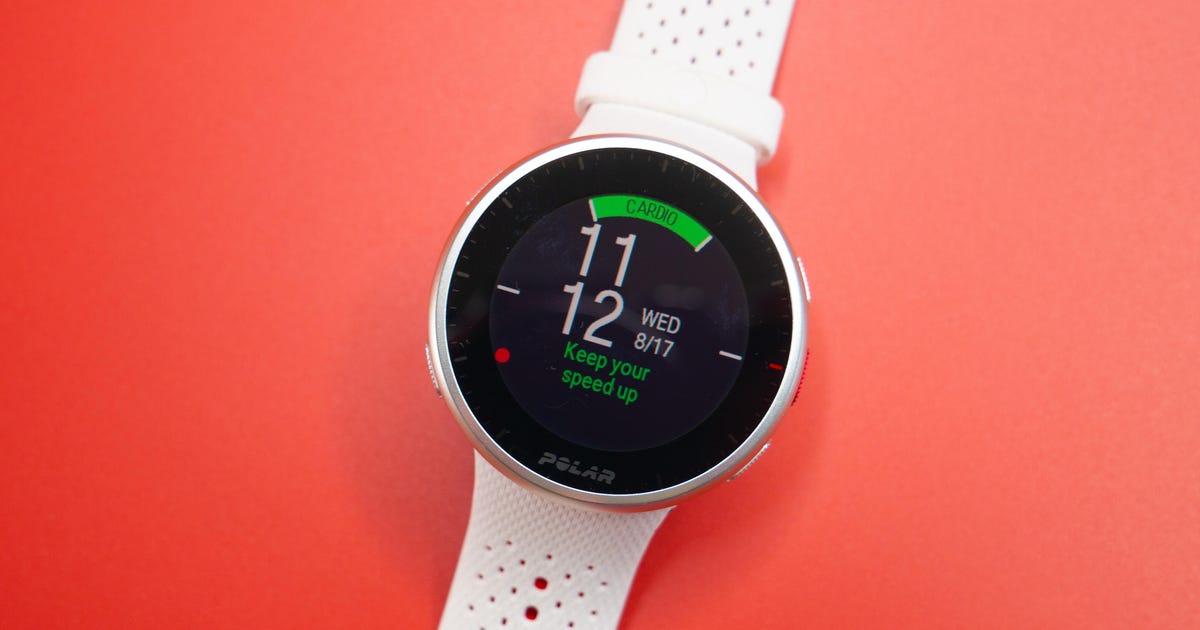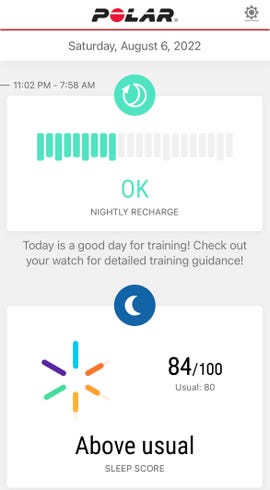
When Polar announced its Pacer Pro watch with tools to help new and experienced runners, I wanted to see if it really could make my workouts suck less. Even though running doesn’t come easily to me, I’ve taught myself to get better. But my motivation dwindled with the pandemic and while I’m still working out, it’s not anywhere near the pace or distance I was logging pre-COVID.
The Pacer Pro wants to stand out from the crowd with new walking and running tests to gauge your fitness, plus personalized workouts tailored to your fitness level. There is no shortage of great running watches, from higher-end models like the Garmin Forerunner 955, to fitness trackers like the Fitbit Charge 5. Apple will also bring new running tools to all the Apple Watch models from the Series 4 onwards with a WatchOS 9 update in the fall. Will Polar’s tools actually make a difference in getting me back to form?
“The good news is, the body remembers,” says Maria Selin, a Polar trainer I spoke with to get tips on easing myself back into a routine. After several weeks of wearing the Pacer Pro to track my workouts, she’s right. My body can do it, even if my mind doesn’t want to admit it.
The new Polar walking test: Good idea, odd execution
I start my journey with the walking test. It’s designed to give a baseline idea of your overall aerobic fitness for occasional or frequent athletes. The Pacer Pro asks me to warm up to get my heart rate to 120bpm. Then, I need to walk as far and as fast as I can in 15 minutes to maintain or increase my heart rate on flat terrain, a challenge in hilly San Francisco.
Even though I felt I was walking at a consistent rate, my watch kept buzzing saying I’d dropped below the threshold. Turns out this simple test was a lot more challenging than I’d thought. The idea of the walking test is great, but the reality is finding a flat course or track to take it on could be a challenge and potentially, your results could be skewed by trying it on your regular walking route. You can’t take the test on a treadmill either, as the watch also needs to calculate distance with GPS.

The test includes warm-up and cool-down segments.
Lexy Savvides/CNET
After 15 minutes, the Pacer Pro shows my VO2 Max level, the maximum amount of oxygen you can use during exercise. It’s a measurement many other watches calculate and in better times, I’d always fall between the “good” to “very good” range.
I repeated the test a couple times on flatter terrain, but overall I now fall in the “fair” to “good” range for my age and weight. The Pacer Pro also comes with a regular fitness test that’s much easier and requires you to lie down for a few minutes and breathe to take its measurements. That test rated me as “very good” VO2 Max, at least 10 units higher than my walking test.
I asked Polar about this discrepancy, which it put down in part to environmental factors such as watch tightness, location and body position during the test, as well as external inputs like speed and heart rate. A company spokesperson also said I should focus more on results from the running test, given that I am not a first-time runner. But because I’d been walking much more frequently than running over the past few years, I felt the walking test would be the better gauge.
Selin doesn’t necessarily encourage beginner or intermittent runners to focus too much on the actual VO2 Max number from these tests. Instead, she says it’s more effective to look at your recovery rate from session to session, which will help indicate how ready you are to take on the next workout. With her guidance, I repeat the tests every week in between my other workouts but keep an eye on my recovery. I am improving my VO2 Max level, even if that progress is slower than I’d like. Mostly, it’s difficult to ensure the test conditions are comparable without going to the same running track each week.
Rest and recovery is just as important as training

The app shows you an overview of your nightly recharge score, sleep score and activity levels from the day before.
Screenshot by Lexy Savvides/CNET
While the walking and running tests haven’t been the most helpful to solidify my new routine, sleep tracking and recovery options on the Pacer Pro are much more robust. Once you wear your watch to sleep for a few nights and get a nightly recharge score, you’ll see up to four personalized workouts tailored to your current fitness level through FitSpark. I’ve really enjoyed seeing the suggested workouts and the cardio ones in particular have helped encourage me to get back on track more so than the individual walking and running tests.
Garmin and Fitbit offer similar suggestions for custom workouts. The Garmin Coach adapts to your training status and lets you choose a particular coach to guide you through training for a race or overall goal, which may be more motivating for some people. For me, Fitbit’s Daily Readiness Score is the easiest to interpret, especially for beginners, as its custom workout selections give guidance on activity level to hit for the day, even if the workouts aren’t completely personalized.
For newcomers to Polar’s ecosystem, the Polar Flow app is confusing until you know where to find things. But once you work that out, I like how the app shows a baseline idea of metrics like cardio load and muscle load after each session, so you can chart your progress over time.
While I don’t think the running and walking tests on the Pacer Pro, or looking at your VO2 Max levels alone will make you a better runner, they are a useful tool to chart your progress over time. As I found out over my few weeks trying to get myself back to prepandemic running levels, it’s not so much what’s on my wrist that makes a difference, but the consistency in how I work out — and how I eventually feel — that really count.

